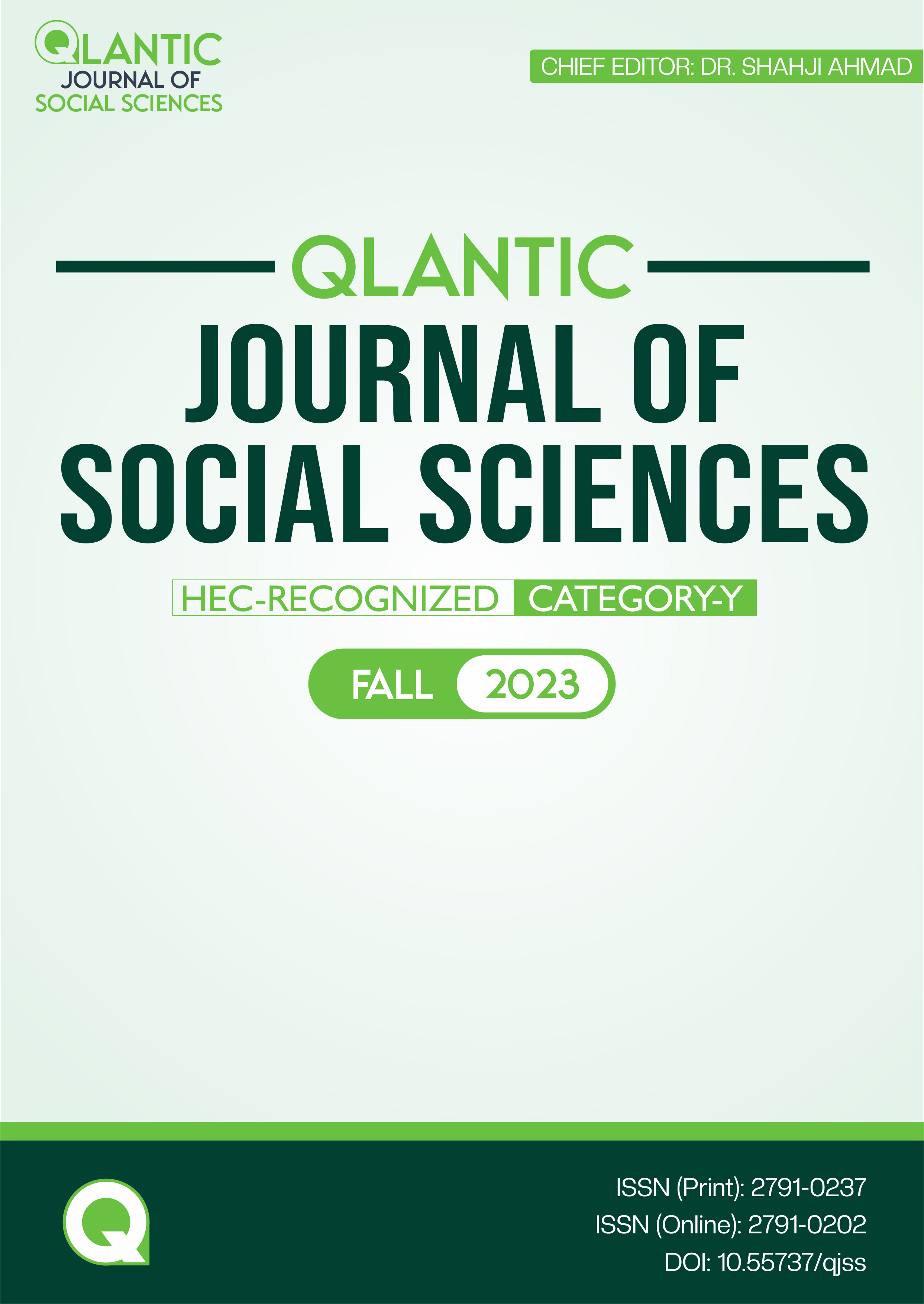A Study on Factors Affecting the Women's Political Participation in Azad Jammu & Kashmir
DOI:
https://doi.org/10.55737/qjss.890829895Keywords:
AJ&K Politics, Women, Political Participation, FactorsAbstract
Azad Jammu & Kashmir (AJ&K) (Pakistan-administered Azad Kashmir) is actually a part of the disputed State of Jammu & Kashmir. The total population of AJ&K is 4,319,394, and the female population is about 2, 211,445. The AJ&K interim constitution of 1970 unlocked political activities by introducing political reforms and a quota system for women in the legislative assembly. Later, the interim constitution of 1974 guaranteed the political participation of women by increasing the quota in the legislative assembly. Currently, women occupy a larger section of the population, and their political participation is less than that of male representation. Despite the constitutional arrangements to support women’s participation, financial resources, political parties’ dealing with female members, cultural bindings, male ascendency, and less priority to women in the decision-making process of parties, family issues are the factors that create hurdles for women to actively take part in politics of AJ&K. This paper analyses the factors that affect women's representation in the political system. As such, this study is an endeavor to examine the participation of women in AJ&K politics and concurrently highlight the hindrances and challenges that affect women's participation in politics.
References
AJ&K Assembly Publications, (2006). Biography of Members of the Legislative Assembly of AJ&K, 1970-2001. AJ&K Assembly Publications 251.
AJ&K at a Glance. (2022). Muzaffarabad: AJ&K Bureau of Statistics Planning & Development Department Muzaffarabad Government of Azad Jammu & Kashmir. https://pndajk.gov.pk/statyearbook.php?page=AJK%20at%20a%20Glance.
Schild, Pascale (2015). Local politics of reconstruction along and across Azad Kashmir’s border with Pakistan. Contemporary South Asia 23(3), 292-313.
Bouka, Y., Berry, M. E., & Kamuru, M. M. (2019). Women’s political inclusion in Kenya’s devolved political system. Journal of Eastern African Studies, 13(2), 313-333. https://doi.org/10.1080/17531055.2019.1592294
Chafetz, J. S., & Dworkin, A.G. (1986). Female revolt: women’s movements in world and historical perspective. Totowa, NJ: Rowman and Allanheld. https://searchworks.stanford.edu/view/1777061
Devlin, C., & Elgie, R. (2008). The effect of increased women's representation in Parliament: The case of Rwanda. Parliamentary Affairs, 61(2), 237-254. https://doi.org/10.1093/pa/gsn007
Haider, F. K. (2021, March 06). Personal Interview.
Hayyat, J. (2020). Azad Jammu and Kashmir Polity, Politics & Power Sharing. Oxford Publications.
Lamb, A. (1998). Kashmir: A Disputed Legacy 1846-1990. Oxford University Press, USA.
Shekhawat, S. (2007). Electoral politics in Pakistan-occupied Kashmir. India Quarterly: A Journal of International Affairs, 63(3), 145-167. https://doi.org/10.1177/097492840706300306
Tremblay, M. (1998). Do female MPs substantively represent women? A study of legislative behavior in Canada's 35th Parliament. Canadian Journal of Political Science, 31(3), 435-465. https://doi.org/10.1017/s0008423900009082




